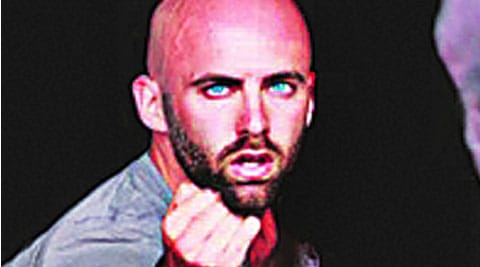Click here to follow Screen Digital on YouTube and stay updated with the latest from the world of cinema.
Break and make
In Pune for a workshop, London-based contemporary dancers Nathaniel Parchment and Carl Pattrick exhibit a keen interest in Indian classical dance forms
 Carl Pattrick
Carl Pattrick
In today’s age, when the walls between cultures are crumbling rapidly, it is only plausible that art forms too will hybridise. Dance, one of the foremost exponents of culture and a primordial form of human expression, follows suit. Nathan Parchment and Carl Pattrick are two London-based contemporary dancers, though the appellation does little justice to their tremendous oeuvre. The duo has been brought to the city by for the first time for a contemporary dance residency, which is a part of the 6th Parayatna Film and Dance festival organised by Hrishikesh’s Centre of Contemporary Dance, and underway at Artsphere, Kalyani Nagar, and Kalachaya, SB Road, till April 24.
Pattrick and Parchment began their careers in dance in the contemporary idiom but drew inspirations heavily from Indian classical forms during their formative years. “In my second year of dance training, I began working with Shobana Jeyasingh, who started as a Bharatnatyam dancer in the UK in the ’80s and has since been fusing contemporary influences into her dance, thus creating a combination of dance involving Bharatnatyam, ballet and contemporary dance,” says Pattrick. He continued with Bharatnatyam and other Indian forms of dance. Soon after, he joined the Royal Academy of Dance and began training under Mavin Khoo, a Bharatnatyam soloist who also knows ballet. “Then, I was under Gauri Sharma Tripathi, a kathak dancer who uses the form as a movement vocabulary to work in the contemporary idiom, despite not being trained in the latter,” adds Pattrick.
Parchment, too, worked with the Shobana Jeyasingh Dance company in London. “What we practised was an abstraction of Bharatnatyam phrases, which would entail using the form to create a larger movement,” says Parchment, adding, “Carl and I also worked with the Akademi South-Asian Dance UK, which is an organisation in London that promotes South-Asian choreographers, and Tripathi, who had brought me as a contemporary dancer. I was expected to use some of the Kathak form in both the choreography and the improvisation.” Parchment, who has also participated in physical theatre, recently spent his second season in Goa. “This season I was teaching at the Goa Contact Dance Festival, which brought me specifically to develop the performance aspect in the Indian scholarship students and shed light on improvisation,” he adds.
Parchment says his students in India are often those who hail from classical backgrounds and he is expected to acquaint them with the Western contemporary style. “I expose them to the Martha Graham, Cunningham and Release techniques in dance, which they otherwise wouldn’t have encountered,” says Parchment. The forms of dance he mentions are acrobatic in nature and, therefore, contrast several Indian forms in this respect. Parchment says they intend to develop something unique from this confluence of forms. “Martha Graham, for example, used her spine and her pelvis in an intensely activated way, which was quite shocking at that time. The pelvis is not used in such a powerful way in Indian classical dance, which is usually very upright and restricted,” says Parchment.
He add, “We are approaching this stint with two objectives — the research aspect, which shows us how we approach classical forms and how they influence our style, is one and the other is holding the workshop, in which we will focus on exploring the pelvic flow to find support and movement from that region.”


































